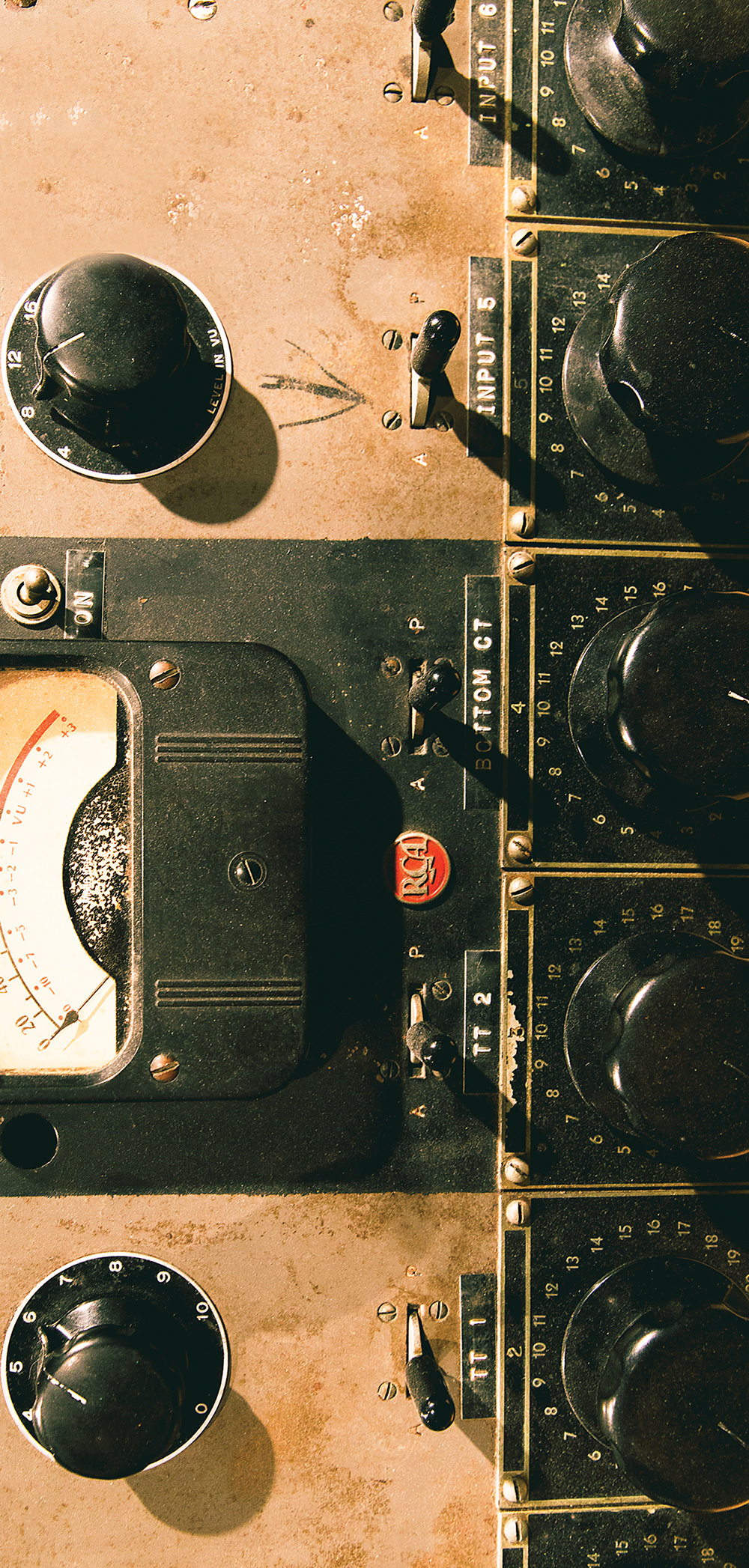Universal Audio's Ocean Way Studios for their UAD platform is a room emulation; this is the most basic fact when trying to describe the plug-in. But this simple description does a huge disservice to what the plug-in can actually do. The boffins at Universal Audio had a genius idea to take convolution to the next level by capturing the sound of multiple rooms in a single studio facility, from various positions in the rooms, and using a whole host of mic pairs at each position. Oh, and not just any "studio facility," but Allen Sides' [Tape Op #106] Ocean Way (formerly, and now again, United Recording). United was originally designed and built by M.T. "Bill" Putnam Sr. - father of UA's Bill Putnam. Sides supervised the creation of Universal Audio's Ocean Way Studios by providing his renowned mic collection and his intimate knowledge of the studios' A and B rooms.
Convolution is a technology that allows us to capture an audio snapshot of a piece of gear (see Waves' Q-Clone and Acustica's Nebula platform), or a place (AudioEase's Altiverb [Tape Op #28]); it has also become an integral component of software amp modelers allowing for impulse responses (or IRs) - the raw material of the convolution process. It's a mature and incredibly useful technology that can allow reverbs to go places that purely algorithmic ones cannot. Universal Audio has cleverly combined convolution and impulse responses - with some innovative algorithmic reverb techniques - into a plug-in I've found infinitely useful for bringing realism to tracks that have been recorded with minimal or no actual room mic'ing.
The Ocean Way Studios plug-in provides for a number of dispersion patterns ("Sources") for Studios A & B based on the type of instrument being sent to the reverb (drums, strings, piano, etc., along with three guitar cabinets). These are merely suggestions, and there's no reason you can't send a vocal to the piano source, for instance. Choosing one a dispersion pattern loads a default set of mics for the Near, Mid, and Far locations. The type of mics, as well as the distances within each location, can be continuously changed, and these choices make a significant difference to the results you get out of the rooms. Also, these aren't just a random selection of any microphones. From humble Shure SM57s to pairs of AKG C12s, Neumann U 67s, Neumann M 50s, and rare mics like the RCA KU-3A unidirectional ribbons, it's an enviable collection by anyone's standards. Universal Audio has also captured multiple patterns for a number of the mics, so there are cardioid and omni choices for the AKG C12s and Neumann U 67s, among others.
There are two modes of operation in Ocean Way Studios: Reverb and Re-Mic. Reverb is the traditional method of setting up the plug-in on a send and varying the amount of signal that you are sending into the space. On the other hand, Re-Mic is a fully "wet" setting that should generally only be used as an insert. According to the Ocean Way Studios' manual; "The dry signal is processed to sound as if it were recorded inside the studio space itself, by emulating the direct signal component. This processed source signal thus inherits the sonic characteristics of the studio acoustics, source dispersion patterns, and microphones with more accuracy and realism than is possible with reverb processing." To put it simply: if you recorded in a less-than-ideal space, the Re-Mic mode can be a lifesaver!
I've been using Ocean Way Studios on a variety of projects both in Reverb and Re-Mic modes. Studio A is a glorious sounding space, and using the "Strings" source loads the DPA Microphones 4006 omni mics that are placed in the loft area above the control room - brilliant for adding size and distance to drums! I will generally add in some Mid mics as well for a tighter, more early-reflection sound that add mass to the kit (the aforementioned RCA KU-3As are faves). An instance of Ocean Way Studios on drum room mics that were recorded in a dodgy space can truly save a recording.
One particular album I've been mixing was recorded in a decent sized studio, but no room mics were used during tracking on any of the drums or amps. Ocean Way Studios Studio B to the rescue! There's a quality to this room that, with a little bit of each instrument added to the send, really makes you feel that the recording has been transported to a new acoustic environment. The pan positions are maintained within the space, but you get that sense of size and reflection from the walls of the room. I think the true beauty of Ocean Way Studios is that it doesn't sound like a reverb (I have all the reverb options I need until the day I die) - it actually sounds like a real freakin' room! Or in this case, one of the greatest recording studios ever built.
That's probably the best way to sum up Universal Audio's Ocean Way Studios; it does something that no other plug-in or piece of hardware I have can do, and does it in a musical, useful, masterful way. Any reservations? I'd love a resizable interface; on my 4K display there's a lot of squinting and leaning in to get a clearer view of things (aging be damned). Other than that, all I can do is give Ocean Way Studios my highest recommendation!




_disp_horizontal_bw.jpg)